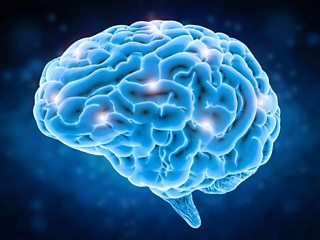What can nuns reveal about the secrets of ageing?
In episode eight of Radio 4 podcast Uncharted, mathematician Hannah Fry explains how a graph tracking nuns’ mental capacity over decades helped reveal vital insights into how our brains age.
Fry tells the story of Sister Mary, whose undimmed cognitive abilities at the age of 101 made her an extraordinary outlier. When researchers investigated how the elderly nun had stayed sharp for so long, it changed their understanding of dementia and mental decline over time.
Here are eight fascinating facts from the show…

In 1986, researchers began recruiting nuns for a landmark study about ageing
Neuroscientist David Snowdon and his team visited convents across the US to find participants for a unique and ambitious research project.
Nuns were the perfect population for the research because their lifestyles tend to remain consistent.
They convinced 678 nuns to take tests every year to measure their cognitive abilities as they aged. The idea was to see when the sisters’ mental faculties would begin to fail, and how quickly they would decline.
Nuns were the perfect population for the research because their lifestyles tend to remain consistent, and by controlling as many variables as possible the researchers could achieve more robust results.
One nun’s cognitive function remained unchanged over time
When researchers plotted all 678 nuns’ annual test results on a graph of age versus cognitive ability, most of their scores fell as their brains became less sharp with age. But one dot stood out: Sister Mary’s. High up in the top right of the graph, she was still achieving impressive scores even at the age of 101. Based on the tests, her mind seemed to be largely unaffected by ageing.
The nuns donated their brains to science after they died
To understand the differences between each person’s brain, and their relationship with cognitive decline, the researchers needed to see them. They asked the nuns to donate their brains to the research after they died. A nun called Sister Mary was one of the nuns that agreed.
Almost four decades on from the start of the study all of the nuns have passed away, but the study lives on thanks to their incredible donations.
Despite her mental sharpness, Sister Mary’s brain showed signs of advanced dementia
When David Snowdon and his team examined Sister Mary’s brain, they were shocked. First of all, it weighed less than most of the others they were studying, suggesting many of the cells had died. And there had been no signs Sister Mary’s mind was failing when she was alive, her brain contained tangled tissues and extensive physical damage. This could be why…
Some people鈥檚 brains may be wired to protect themselves against cognitive decline
One explanation for Sister Mary’s continued mental clarity as her brain deteriorated is something called “cognitive reserve”. Cognitive reserve is still an emerging subject of study. Scientists are unsure exactly how this works, but the theory so far is this… cognitive reserve is the idea that lifelong learning can strengthen protective neurons so that they effectively create patches around damage to our brains that happens as we age. As a result, although the physical signs of dementia are still there, they don’t have the same impact on cognitive function. There are of course many factors involved here. It could simply be down to the placement of the damage that her brain function survived, or even genetic factors we’re not yet aware of. But one thing we are sure of is that Sister Mary’s story was nothing short of remarkable to David and his colleagues… but there was one last surprise…

Researchers could predict which nuns would develop dementia based on writing from years earlier
When the researchers studied essays the nuns had written before embarking on religious life, they found something even more surprising. Clues in each person’s writing enabled them to predict with 85-90% accuracy who would develop Alzheimer’s decades later. Essentially, those who used more descriptive language and complex grammar were likely to be better protected from cognitive decline, while those whose writing was plainer and less expressive were more likely to experience dementia.
There is a link between education and the risk of dementia
The link between written language skills earlier in life and later dementia can be interpreted in one of two ways. Did the mental exercise of writing expressively have a protective effect on these nuns’ brains? Or were those whose writing was less lively already showing signs they were predisposed to dementia? We still have a lot to learn, but we do know that higher levels of education are related to a reduced risk of developing Alzheimer’s disease.
A breakthrough in dementia research could be just years away
Blood tests and MRI scans are now making early detection of dementia more likely. Tackling it remains a huge challenge, but many researchers think we could soon develop a treatment to clear plaques and tangles from our brains as they develop. Whatever the future holds, thanks to the generosity of Sister Mary and the other nuns, we have a greater understanding of ageing and brain function.
If you’ve ever thought graphs are boring, Uncharted will change your mind. Listen to the full series now, to hear Hannah Fry unpick the lines, dots and data to reveal extraordinary truths and incredible human stories.
More from 成人论坛 Radio 4
-
![]()
The Briefing Room: Our Ageing World
The global population is rapidly getting older. How do we deal with the impacts?
-
![]()
A Point of View: Notes on Ageing
Michael Morpurgo reflects on age as he approaches his 80th birthday.
-
![]()
FutureProofing: Ageing
How will our ideas about ageing change as life expectancy rises to 100 and beyond?
-
![]()
The Gift
What happens when online ancestry tests reveal more than you had bargained for?





